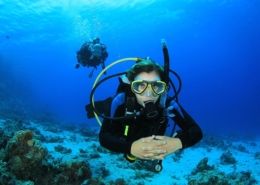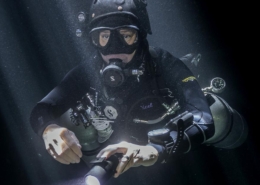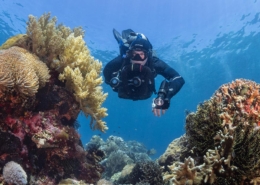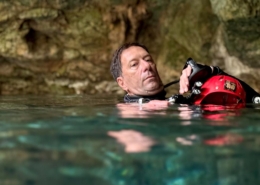What do you think I need to see from you in order to pass you?
Article by Mark Powell
If our students are completely in the dark as to whether they have passed or failed their course at the end of the last dive, we have not done a good job as an instructor.
Our students should know where the bar is and how far they are from reaching it.
I want my student to pass and so do they. We are on the same side and we should be working together to get there. If this is not the case then one, and probably both, of us are going to be disappointed.
The worst-case scenario is when you have to tell a student that they have not passed a course when they are convinced that they have done a fantastic job. This is an unpleasant situation that we all want to avoid and, in this article, I will give you a simple tool to avoid this embarrassing situation.
SMART Objectives
Ensuring that your students know where the bar is to pass a course starts with having clear objectives. SMART objectives. This means objectives that are;
Specific
Measurable
Achievable
Realistic
Timely
If it is not clear what the student needs to do then the objective is not specific. If it is not clear how they will be judged as meeting that objective then it is not measurable. If it is not possible to reach that goal then it is not Achievable or Realistic and if there is not enough time to reach the goal in the confines of the course then it is not Timely.
Where is the bar?
If the instructor is clear on the objectives, if they are SMART, and if the student understands the objectives, they know the level of the bar they need to reach.
For example, if the instructor says “your buoyancy isn’t very good, you need to improve it” that is not SMART. The student does not know how much they need to improve or how to achieve this. Alternatively, we could say “you are not using a visual reference and so you are dropping down when you do that skill. Use your buddy, the reef, the wreck, a shotline, DSMB or your computer to monitor your depth and aim for no more than +/- 0.5m movement when you do that skill”. In this case the student knows exactly what they need to do and how to achieve it to meet the goal. More than this, they can judge their improvement towards that goal. If their first attempt involves them dropping down 1m they know how far away from the goal they are. If their second attempt involves only moving 0.7m they know they are improving and are nearly at their target. If their third attempt only involved 0.3m of movement they know they have met and exceeded the goal.
Equally, if the instructor says “you have no awareness of your air consumption” that is not great feedback as there is no SMART objective. However, if they say, “I want you to check your SPG every 2 minutes”, the instructor can time the interval between checks and give specific feedback on how often the student checked their SPG.
Priorities
As the course progresses the instructor is likely to give lots of feedback to the student. Some of it will be absolutely essential “must-have” changes and some will be “nice-to-have” improvements. It can be confusing for the student as to which of these are the highest priority.
In order to help the student with this, I use the question in the title of this article. Towards the end of the course, often at the end of the penultimate day, I will ask “what do you think I need to see from you in order to be able to pass you?” This is a very useful question as it shows me whether the student is aware of the areas they need to improve. It can result in a number of potential responses showing that the student;
- already knows the areas they need to improve and how to do that.
- already knows the areas they need to improve but is unsure how to achieve that improvement
- is focused on a “nice-to-have” issues and has missed some “must-have” issues.
- has no awareness of where they need to improve
- is overly critical of themselves in an area where they are doing ok
The response will then influence how I deal with the situation. For example, if I can see an issue with their performance but they are aware of this issue and know how to deal with it, that is a completely different situation to one where I can see the issue but they are not aware of it, let alone how to fix it. Alternatively, if they are focused on the wrong issue then I can focus their attention on the key issues. Finally, for divers that are overly critical of themselves I can reduce the pressure they are putting on themselves by reassuring them that their performance is ok and even though they will want to continue improving their performance is good enough to pass the course. This is particularly important as sometimes a student will put so much pressure on themselves that it is counterproductive and the stress caused them to make silly mistakes that they would not otherwise have made.
By the end of the conversation, it is essential that both you and the student are absolutely clear on what improvement is needed in order to reach the required level.
Did we reach the objective?
The other advantage of the “what do I need to see from you?” question is that it makes it easy to structure the subsequent debrief and makes it explicit as to whether they have achieved the goal or not. This removes any subjectivity in the assessment or the student’s perception of subjectivity in the assessment. As a result, the debrief is easy; the objective was clear, specific and measurable so it should be clear to all as to whether we met that goal or not. If all the goals were met, the student can be confident in their abilities but if they were not met at least the student knows where they need to improve and have a way of measuring their improvement.
It is such a simple question “what do I need to see from you?” but if used correctly it can help the student to reach the goal and ensure that there are no unpleasant surprises at the end of the course.













Leave a Reply
Want to join the discussion?Feel free to contribute!